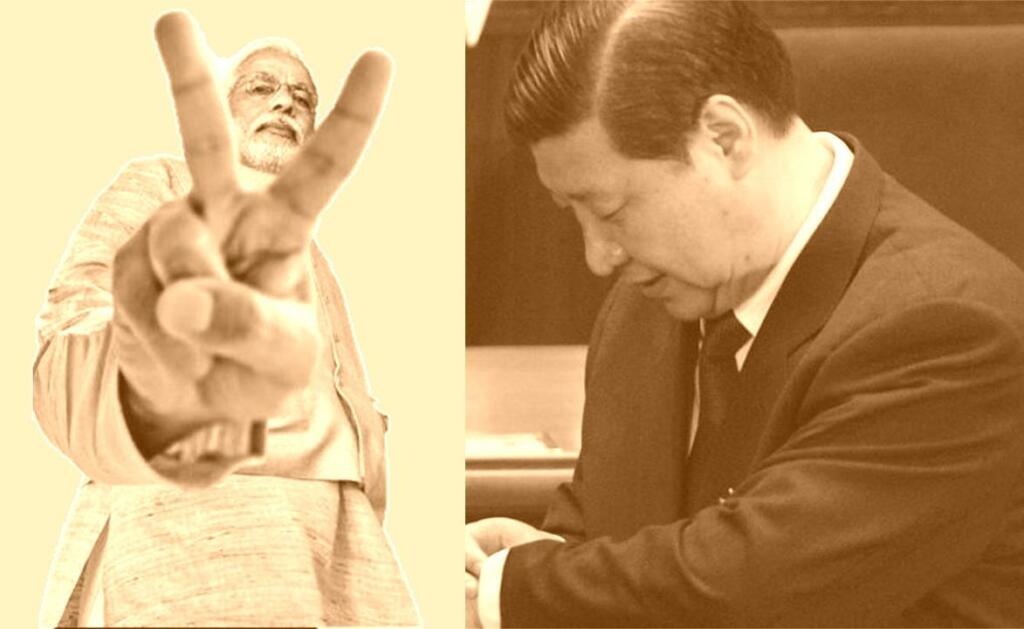Despite the devastating second wave of Covid-19, Indian economic growth touched a milestone in the July-September quarter by clocking a better-than-expected 8.4 percent GDP growth. With the new GDP numbers, India has crossed the pre-pandemic levels and is well set to retain the tag of the world’s fastest-growing economy. As the Indian economy soars, China is looking at an economic lull.
Official data released by the Ministry of Commerce and Industry stated that the combined output of eight core industries had surged by 7.5 percent in October, as compared to the same period last year
India’s GDP growth estimated at 8.4% for the Second Quarter (July-September) of 2021-22: National Statistical Office pic.twitter.com/SFljR5vg2R
— DD News (@DDNewslive) November 30, 2021
Sakshi Gupta, a senior economist was quoted as saying by Reuters, “The GDP growth for Q2 at 8.4% confirms that the economy gained traction in the second quarter. On the supply side, agriculture growth provided support, along with a pick-up in service sector growth at 10.2% as contact-intensive services improved along with financial and real estate sectors,”
Sluggish growth numbers posted by China
Meanwhile, according to data released by CCP, China grew 4.9 percent in July-September from earlier, the weakest pace since the third quarter of 2020 and slowing from 7.9 percent in the second quarter.
Unlike China, India’s growth numbers were propelled by the increased production of natural resources such as Coal, “The combined Index of Eight Core Industries stood at 136.2 in October 2021, which increased by 7.5 percent (provisional) as compared to the Index of October 2020. The production of coal, natural gas, refinery products, fertilisers, steel, cement and electricity industries increased in October 2021 over the corresponding period of last year,”
China is in a serious crisis
Reported by TFI, presently, China is facing a serious shortfall of coal. Last year, Beijing had imposed an unofficial ban on Australian coal, which immediately led to the southern provinces in the communist nation going dark.
China is the biggest coal consumer in the world. The communist nation still consumes over 56% of coal as a part of its total energy consumption. Fossil fuel is the most vital part of China’s energy security.
Such a high concentration of thermal power in China means that any decline in coal supply hurts its ability to generate sufficient electricity.
Also read: COAL!! Cries China
Moreover, as a direct repercussion of the scarcity of non-renewable material, China has been forced to shut down everything from aluminum smelters to textiles, and even food processing units like soybean plants.
It hasn’t helped China’s cause that its President Xi Jinping has been cracking down on the big tech companies of the country, all the while keeping a blind eye towards the massive crash in the real estate sector with the bankruptcy of Evergrande.
Read More: China gives up on real estate giant Evergrande, braces for a nasty downfall
How is India faring?
This is the second successive quarter where India’s GDP growth has posted excellent numbers. As reported by TFI, amid the sullen faces of the armchair, left-liberal economists, India’s GDP grew at a record pace of 20.1 percent in the first quarter of FY22 — the highest-ever GDP growth in a single quarter.
Moreover, as announced by Union Finance Minister on Wednesday (December 1), the GST collection for the month of November stood at Rs 1,31,526 crore which is 25 percent higher than the GST revenues in the same month last year and 27 percent over 2019-20.
As reported by TFI, in October, even global credit rating agency Moody’s revised the outlook for the Indian banking sector to stable from negative.
The credit agency said, “We have revised the outlook for the Indian banking system to stable from negative. The deterioration of asset quality since the onset of the coronavirus pandemic has been moderate, and an improving operating environment will support asset quality. Declining credit costs as a result of improving asset quality will lead to improvements in profitability,”
Reportedly, the agency believes that aided by a stable banking sector, India’s economy will continue to recover miraculously in the next 12-18 months, with GDP growing 9.3 percent in the fiscal year ending March 2022 and 7.9 percent in the following year.
Read More: An NPA-ridden Indian banking sector has been “stabilised” by PM Modi, Moody’s says
Even after a devastating second wave of the pandemic, the Modi government has managed to wade through the testing waters and is now reaping the rewards for it.
The record GST collections, stabilizing banking sector, and last but not least, the growing GDP numbers are indicators that the economy is coming out of the pandemic, rather brilliantly. The best part is that there is still a whole lot of room left for the government to bring its sweeping reforms and clock the new, astronomical numbers.
